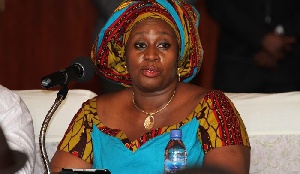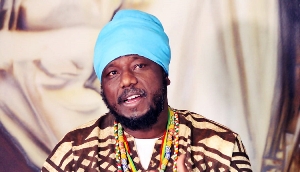The Monetary Policy Committee of the Bank of Ghana on Monday announced its decision to maintain the monetary policy rate at 20%.
This decision is geared towards ensuring Ghana achieves its medium term inflation target of 8.2% and maintain the inflation target horizon.
According to the committee, there has been a decline in core inflation throughout 2017 with a 550 basis point policy cut.
“In sum, the Committee noted the increased pace of global growth which is expected to continue in 2018, and the relatively subdued global inflation, supporting broad-based accommodative monetary policy stance across the major advanced economies. This has had a moderating effect on global financing conditions with positive implications for emerging and frontier markets, including Ghana.”
Below is statement from the Bank of Ghana.
1. Ladies and Gentlemen, welcome to the press briefing of the 80th regular meeting of the Monetary Policy Committee (MPC), the first in 2018. We present highlights of our assessments of 2017, and developments that have shaped the Committee’s view of the outlook and informed its decision on the stance of monetary policy going forward.
2. The global economy continues to rebound, and is expected to be sustained over the medium term, supported by increased investments, manufacturing activity and trade, alongside general accommodative monetary policies. The growth recovery has been strong in advanced economies; and other emerging market and developing countries are also picking up. Although near-term growth risks are on the upside, the global outlook is still subject to substantial downside risks including protectionism and geopolitical tensions. In Sub-Saharan Africa, a modest recovery is underway driven mainly by improvements in the three large economies of Nigeria, South Africa and Angola. Although global inflation remained largely subdued for the most part of 2017, the closure of the output gap in some advanced countries has led to gradual monetary policy normalization, but financing conditions still remain favourable, as low interest rates in most advanced economies persist.
3. Prices of Ghana’s three major commodity exports recorded mixed developments in the course of 2017. Crude oil prices gained the most on the back of geopolitical tensions, supply constraints and strong demand. In the first few weeks of 2018, crude oil prices have firmed up above US$60 per barrel, the highest since 2014.
The decision by OPEC and non-OPEC producers on extending oil output cuts until the end of 2018 in a bid to clear the global crude oil glut and increased energy demand are among the factors driving up prices. Also, gold prices performed better than anticipated in 2017 as the global economic recovery gained traction, but may moderate as interest rates rise in advanced economies. Cocoa prices on the other hand, were generally depressed in 2017 on account of excess supply across the West African sub-region. Cocoa prices are expected to remain modest as the prevailing market dynamics persist.
4. Broadly, these developments in the external environment transmitted favourably to the domestic economy through the various channels.
5. On the domestic front, there was a trend decline in prices during 2017, with inflation dropping from 15.4 percent in December 2016 to 11.8 percent in December 2017. However, since the last MPC meeting, headline inflation has recorded two marginal upticks, mainly reflecting price pressures from domestic food and rising international crude oil prices which translated directly into ex-pump prices. All the Bank’s core inflation measures have generally remained flat until recent episodes of elevation in the last quarter of 2017. The Bank of Ghana’s measure of core inflation, which excludes energy and utility, edged up from 12.3 percent in October to 12.6 percent in December 2017. These notwithstanding, the Bank’s weighted inflation expectations by businesses, consumers and the financial sector declined in December.
6. GDP growth momentum was maintained throughout 2017. Provisional GDP estimates from the Ghana Statistical Service (GSS) indicated that the economy grew by 9.3 percent in the third quarter, up from 9.0 and 6.6 percent in the second and first quarters of the year respectively. The non-oil GDP, which was slow in the first half of the year, picked up in the third quarter, recording a 5.9 percent growth, compared with 4.0 and 3.9 percent in the second and first quarters of 2017.
7. The Bank of Ghana’s Composite Index of Economic Activity (CIEA) recorded an annual growth of 10.7 percent in November 2017, compared with a contraction of 1.5 percent in the same period last year, providing further evidence of improvements in the real sector. In addition, the Bank of Ghana survey of businesses and consumers showed that confidence remained high throughout 2017, pointing to positive sentiments on growth prospects, realization of business expectations and general improvements in the economy.
8. Consistent with contained aggregate demand pressures, there was a slower pace of growth in the key monetary aggregates during the second half of 2017. Annual growth in total liquidity slowed to 16.7 percent in December 2017 from 22.0 percent a year ago.
9. Following improved macroeconomic conditions, interest rates also generally followed a declining trend. Interbank rates, that is, the rates at which commercial banks lend among themselves, declined to 19.3 percent as against 25.4 percent in December 2016. The interest rate equivalent of the benchmark treasury securities also declined — the 91-day treasury bill rate dropped to 13.3 percent (16.8 percent in December 2016), the 182-day rate also declined to 13.8 percent (18.5 percent in December 2016) and the 1-year note also declined markedly to 15 percent (21.5 percent in December 2016).
10. Credit to the private sector by banks grew steadily from 6.8 percent in August 2017 to 12.8 percent in December, on year-on-year basis, reflecting recovery from the slack in the first half year. The gradual increase in private sector credit extension was supported by some easing of credit stance on loans to small, medium and large enterprises. However, the survey showed net tightening of credit stance to long-term loans to enterprises and households as banks continue to repair their balance sheets.
11. Evidence from all these leading indicators monitored by the Bank of Ghana show that the revised end year projected GDP of 7.9 percent is attainable.
12. The banking sector as a whole continued to be liquid, profitable and solvent although asset quality remained a concern. The total asset base of banks increased to GH¢93.2 billion in December 2017, indicating an annual growth of 12.8 percent compared with the 30.4 percent growth recorded in 2016. The asset growth was mainly funded by total deposits which went up by 10.6 percent on year-on-year basis. The industry’s Capital Adequacy Ratio (CAR) which fell to 14.8 percent in June 2017 after the AQR exercise, increased to 18.0 percent at the end of December 2017, significantly above the 10.0 percent prudential requirements after implementation of the capital restoration plans in the sector. Return on assets improved from 17.6 percent at the end of December 2016 to 18.8 percent at the end of December 2017. Efficiency indicators on costs to income and operational costs to gross income remained largely unchanged compared to a year ago.
13. Other financial soundness indicators recorded some improvements, but the quality of banks’ loan portfolio still remains source of concern. The Non-Performing Loans (NPLs) ratio moved from 21.6 percent at the end of October to 22.7 percent in December 2017, with over half of these loans in the loan loss category. Adjusting for the loss category that has been fully provisioned for, the ratio drops to 10.8 percent.
14. Provisional data on government operations indicated an overall budget deficit of 5.4 percent of GDP in the year to November 2017, against the target of 6.0 percent. Total revenue and grants was 17.1 percent of GDP, below the target of 19.0 percent while total expenditures, including arrears clearance, was 22.5 percent of GDP below the budgeted estimate of 25.0 percent. Preliminary banking data showing government receipts and payments indicate that the overall budget deficit is likely to stay within the 2017 target of 6.3 percent of GDP.
15. Total public debt as at November 2017 stood at GH¢138.8 billion (68.7% of GDP) up from GH¢122.6 billion (73.3% of GDP) in December 2016. Of the total, domestic debt went up by 20.1 percent to GH¢64.2 billion, while external debt rose by 7.9 percent to GH¢74.7 billion.
16. The maturity profile of domestic debt show that the proportion of short-dated instruments declined from 37.6 percent in December 2016 to 23.1 percent in November 2017. In contrast, the share of medium-term instruments increased from 38.1 percent to 57.2 percent in the same period. This trend was also complemented by a correction of the yield curve.
17. The external sector developments for 2017 were very strong. Provisional estimates of the balance of payments reflected significant improvements in the trade and current account balances relative to 2016. The trade account recorded a surplus of US$1.1 billion (2.3% of GDP) compared with a trade deficit of US$1.8 billion (4.2% of GDP) in December 2016, and driven mainly by higher export receipts from oil, cocoa and gold. This translated into a lower current account deficit of US$2.1 billion (4.6% of GDP) compared with US$2.8 billion (6.6% of GDP) in 2016. The current account outturn, together with positive net inflows estimated at US$3.0 billion (6.6% of GDP) in the capital and financial account resulted in a balance of payments surplus of US$1.1 billion (2.4% of GDP) against a surplus of US$247 million (0.6% of GDP) in 2016. This provided some room for a stronger reserve build-up of over US$1 billion in 2017. Consequently, Gross International Reserves (GIR) stood at US$7.6 billion (4.3 months of import cover) compared to US$6.2 billion (3.5 months of import cover) in December 2016.
18. As a result, the domestic currency market remained stable throughout 2017, although some seasonal demand pressures emerged in the last quarter. Overall, the Ghana cedi depreciated against the US dollar by 4.9 percent year-on-year, compared with 9.7 percent in 2016, and this has been the strongest performance of the cedi against the dollar since 2011.
Summary and Outlook
19. In sum, the Committee noted the increased pace of global growth which is expected to continue in 2018, and the relatively subdued global inflation, supporting broad-based accommodative monetary policy stance across the major advanced economies. This has had a moderating effect on global financing conditions with positive implications for emerging and frontier markets, including Ghana.
20. Domestically, economic activity has been fairly robust and the momentum is expected to be sustained over the medium term, supported by continued favourable external financing conditions. The balance of payments has performed strongly, with a trade surplus and favourable outturn in the current account, and a higher than programmed reserve build-up providing enough buffer against potential external vulnerabilities. Clearly, these developments are reflecting in increased confidence at home and also abroad with our external partners — evident in the tightening of interest rate spreads on Ghana’s sovereign bond instruments on international capital markets.
21. The fiscal consolidation process is on track, and is expected to deliver better-than-programmed budget deficit in 2017 as expenditures were properly aligned to address shortfalls in revenues. Furthermore, economic activity has picked up significantly while private sector credit growth is recovering. The non-oil sector of the economy is also rebounding—after the sluggish performance in the first half of the year—supported by continued improvements in the economic fundamentals and improved investor confidence. These trends are expected to continue in 2018.
22. While there was a trend decline in headline and core inflation throughout the year, allowing for some 550 basis points policy rate cut, the Committee has observed some emerging pressures in underlying inflation in the last two months of 2017, although inflation expectations appear to be well anchored.
23. Under the circumstances and to ensure that the inflation target horizon is maintained and the medium term inflation target of 8±2 percent is achieved this year, the Committee decided to maintain the monetary policy rate at 20 percent.
Information Note
The next Monetary Policy Committee (MPC) meeting is scheduled for March 21, 2018. The meeting will conclude on Monday, March 26, 2018 with the announcement of the policy decision.
Business News of Monday, 22 January 2018
Source: 3news.com













